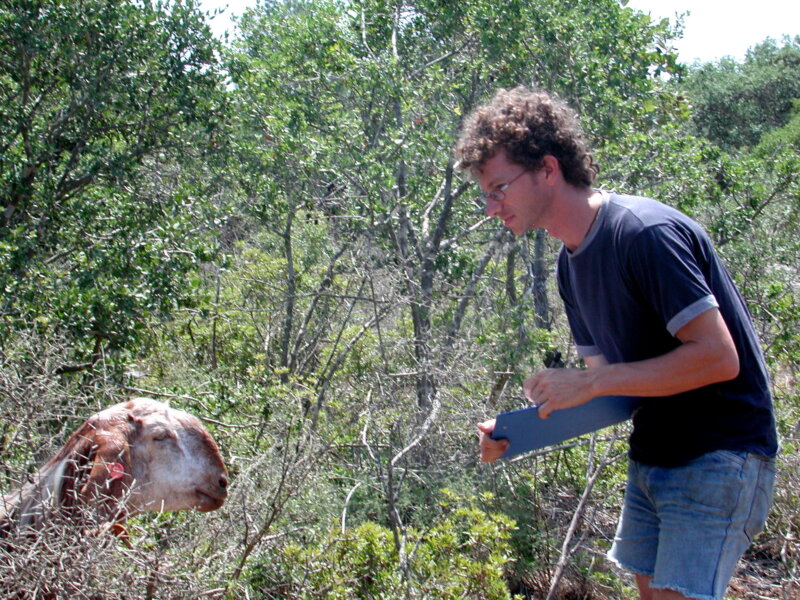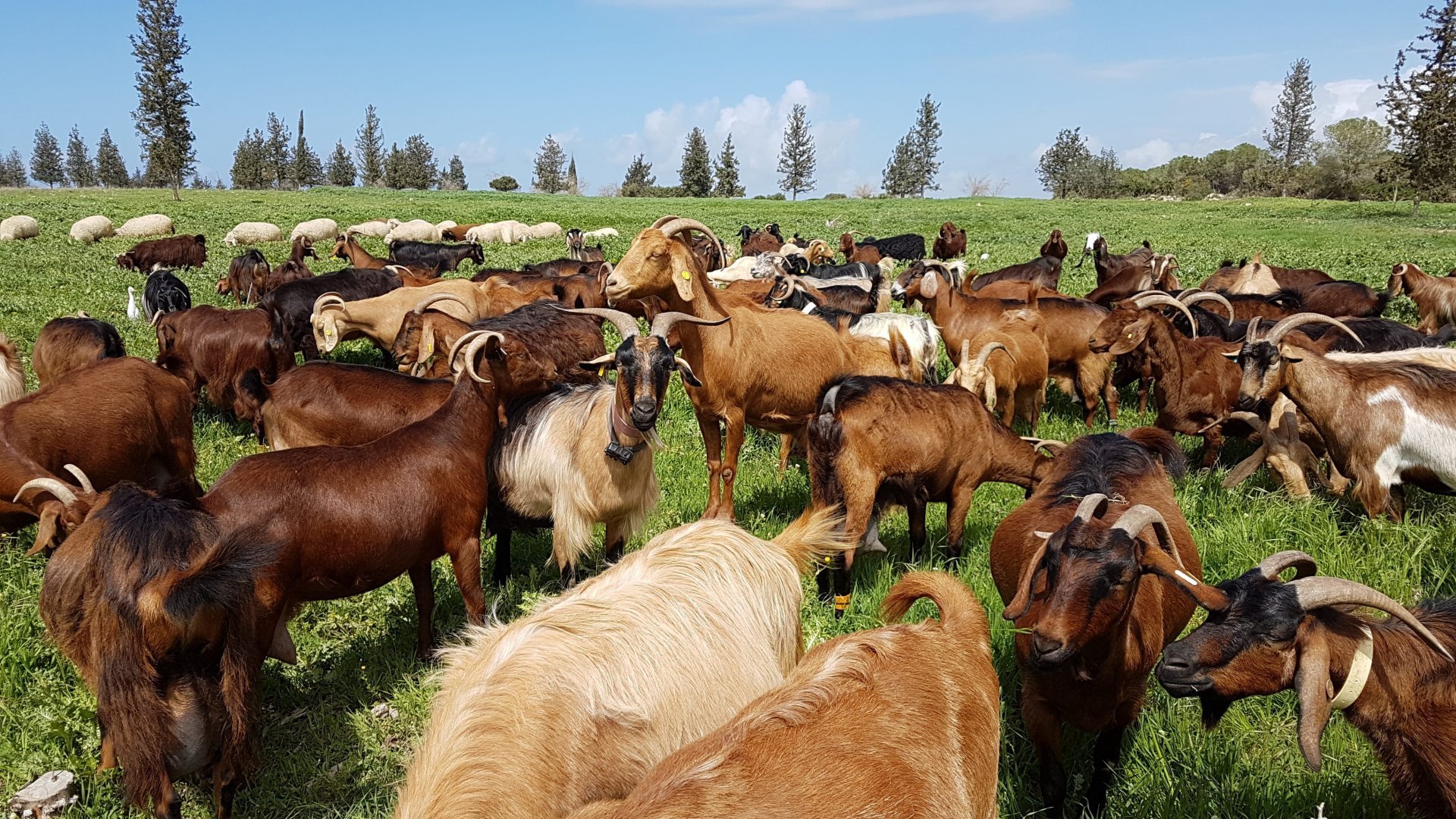Penning the Goats – When a Goat Pen is Born (or Kidded)
How is a goat pen “born”? What causes a nature park to set up a goat pen and where does it meet you?
(spoiler: in the shower)
 News and Events
News and Events
How is a goat pen “born”? What causes a nature park to set up a goat pen and where does it meet you?
(spoiler: in the shower)

In the early 1990s a young man called Tzach is travelling after meaningful army service and agricultural studies, with a dream in his heart: to set up a goat herd and live on a solitary farm. He goes to France to learn the practical aspects of goat rearing and cheese production.
It’s 2002, and one day the phone rings; on the other end is Jan Landau from the Volcani Center (the largest organisation in Israel for agricultural research). He explains that they are interested in bringing goats to Ramat Hanadiv’s Nature Park for the purposes of fire prevention and biodiversity preservation, and wants to know which breed of goat would be most suitable.
Tzach jumped at the opportunity.
Thus he was able to fulfil his dream and become a partner in the establishment of the unique goat pen at Ramat Hanadiv.

The sheep eat the herbaceous vegetation that must be eaten to protect Ramat Hanadiv from fires


Dealing with (and investigating) poop
The newly-established goat pen was populated with thirty-six goats from the following breeds: the Damascus (Shami) goat, the Mamber (Baladi) goat, and the Boer goat. A preliminary study showed that the Damascus goat was best able to cope with the Mediterranean woodland plants.
As part of his master’s research, Tzach studied and developed a method for learning about the food eaten by the goats in the field by scanning the goats’ droppings and examining the nutritional value of their food.
Subsequently, he examined whether the goats’ choice of food in the field was innate or acquired. By this stage, there were already 100 goats participating in the research.

Thus it was proven that an animal that goes out to graze in the field produces healthier milk, with higher content of the solid components (protein and fat) indicating overall higher quality.


Studying and protecting!
Since 2007, when these studies ended, the herd became the property of Ramat Hanadiv and began functioning as part of the park’s management approach. At that time, the herd was put to use not only for research but as part of a two-pronged plan to protect the park:
First, the goats would be partners in protecting the Nature Park from fires by eating the shrubby (woody) vegetation (which is particularly flammable), and second, by consuming the vegetation they would be protecting the biodiversity of the park that had been shown to decline due to the high density of the woody vegetation.
In 2012, the first grazing plan was prepared for the park – a detailed plan including a large, broader grazing trail that benefits both the park and the goats.
The fact that most herds in Israel are fed on feed mixtures provided in the goat pen rather than by grazing in the field led the Volcani Center and Ramat Hanadiv to continue investigating the quality of the milk from a herd that mainly grazes in the field. Thus, from 2012 to 2019, many studies accompanied and investigated the quality of the milk in the goat pen.
Thus it was proven that an animal that goes out to graze in the field produces healthier milk, with higher content of the solid components (protein and fat) indicating overall higher quality.
Counting sheep
In 2016, 50 sheep were added to the goat herd, because in contrast to the goats that primarily eat the woody vegetation, the sheep eat the herbaceous vegetation that must also be eaten to protect Ramat Hanadiv from fires.
Currently the herd numbers 200 individuals – 150 goats and 50 sheep.
One of the interesting and surprising experiments conducted thanks to the goat pen is the production of face soap from our local goat milk; you can buy this soap in our InfoShop.
How did we decide to produce face soap from goat milk? And what does the goats’ park routine look like?
In the next articles…
Did you like it? Join our free mailing list to receive monthly news and updates about activities for the whole family. Register here.
Any question? We will be glad to help